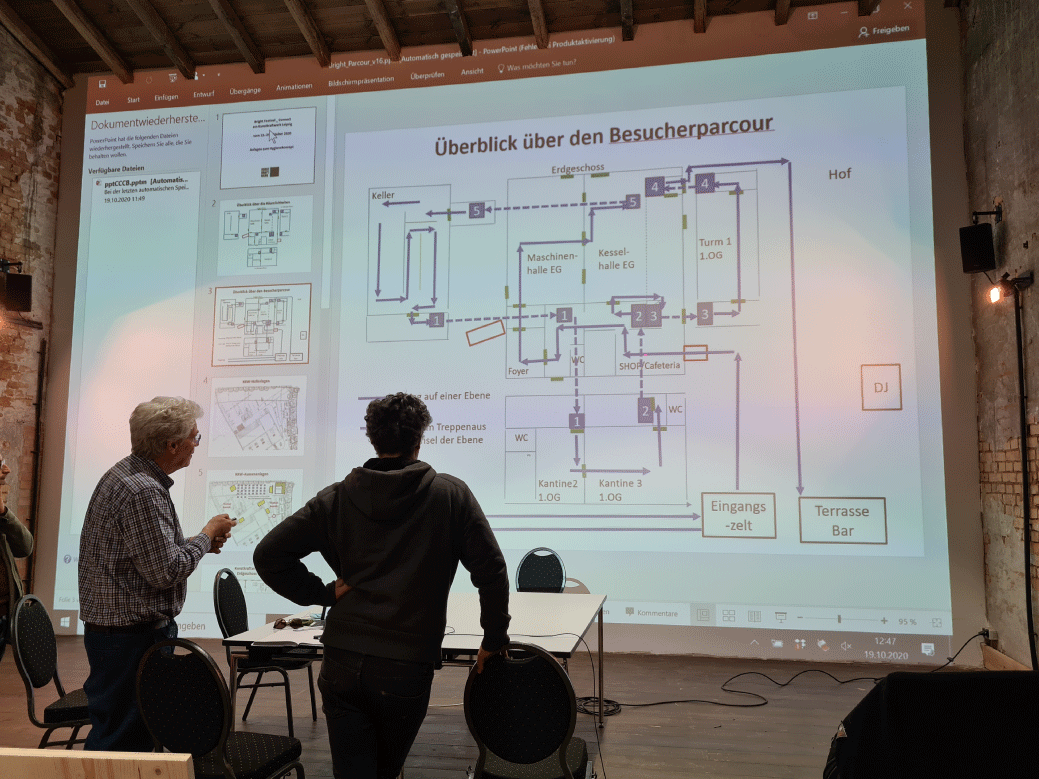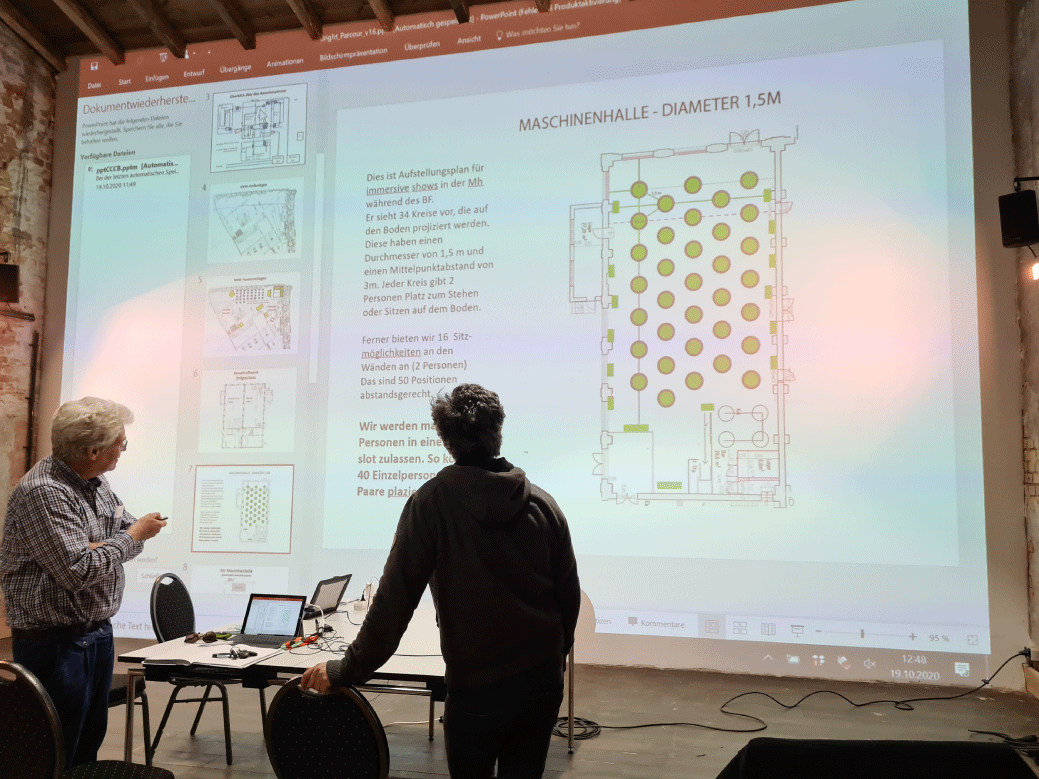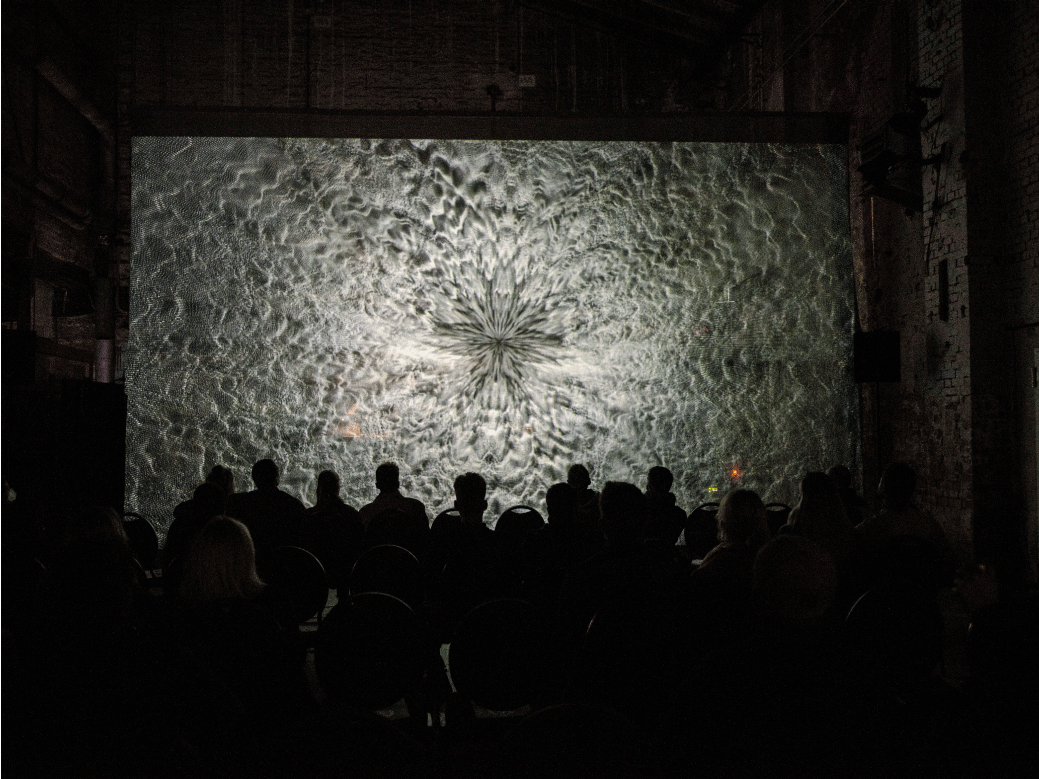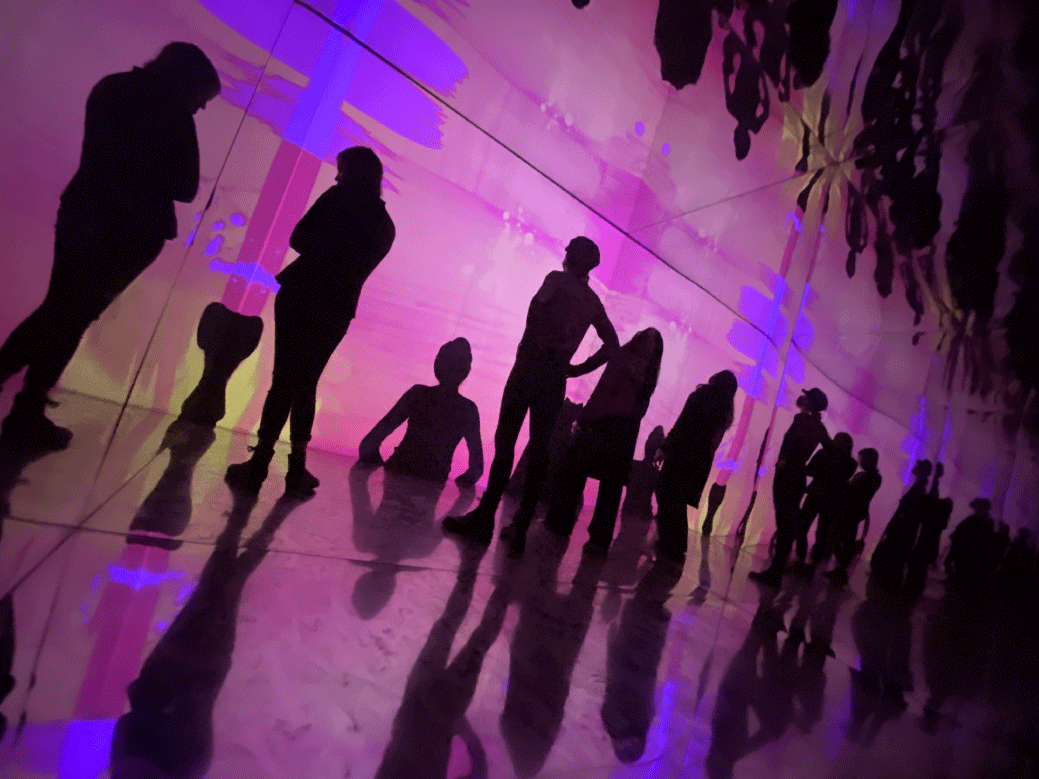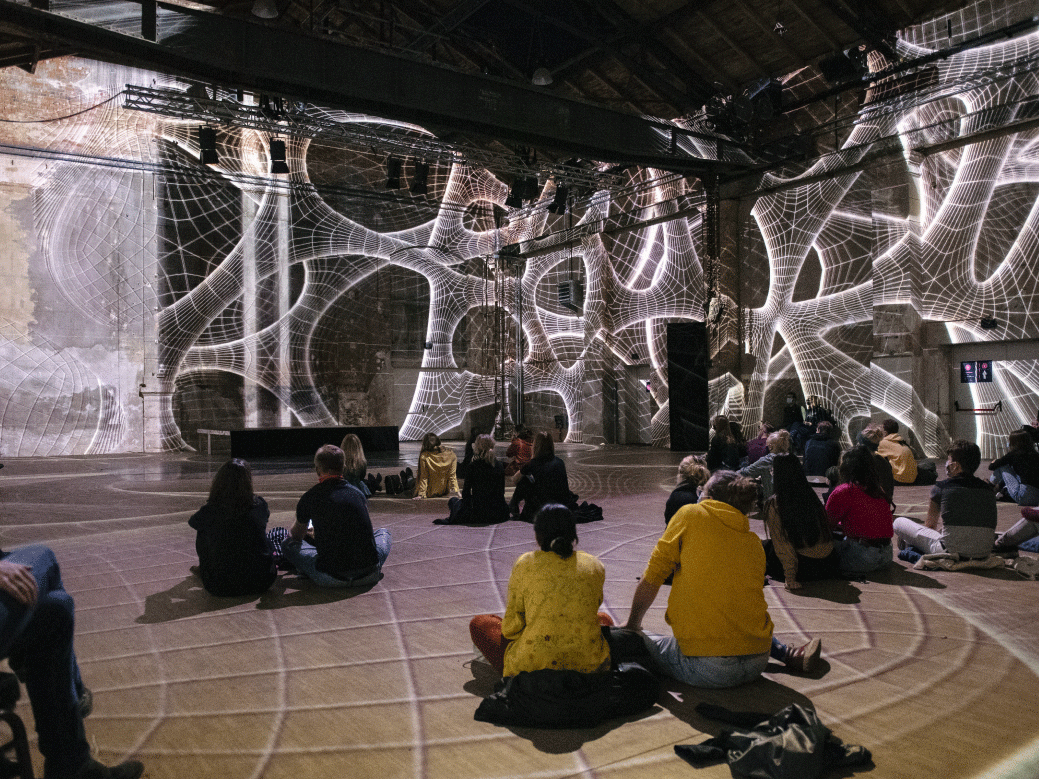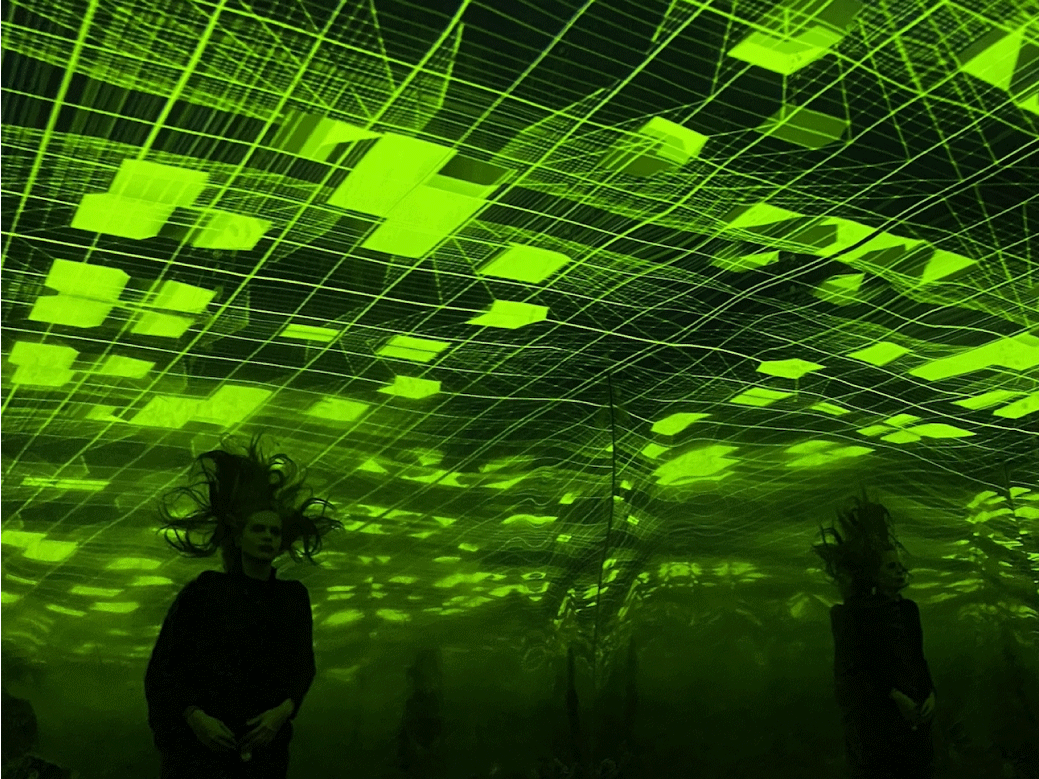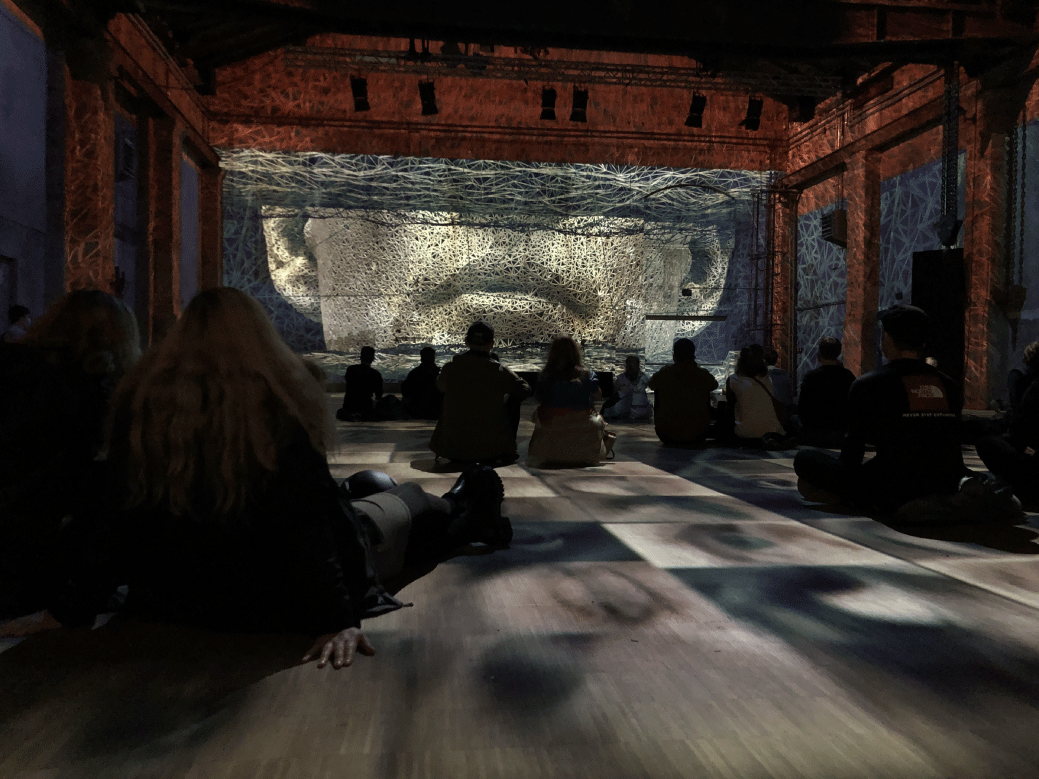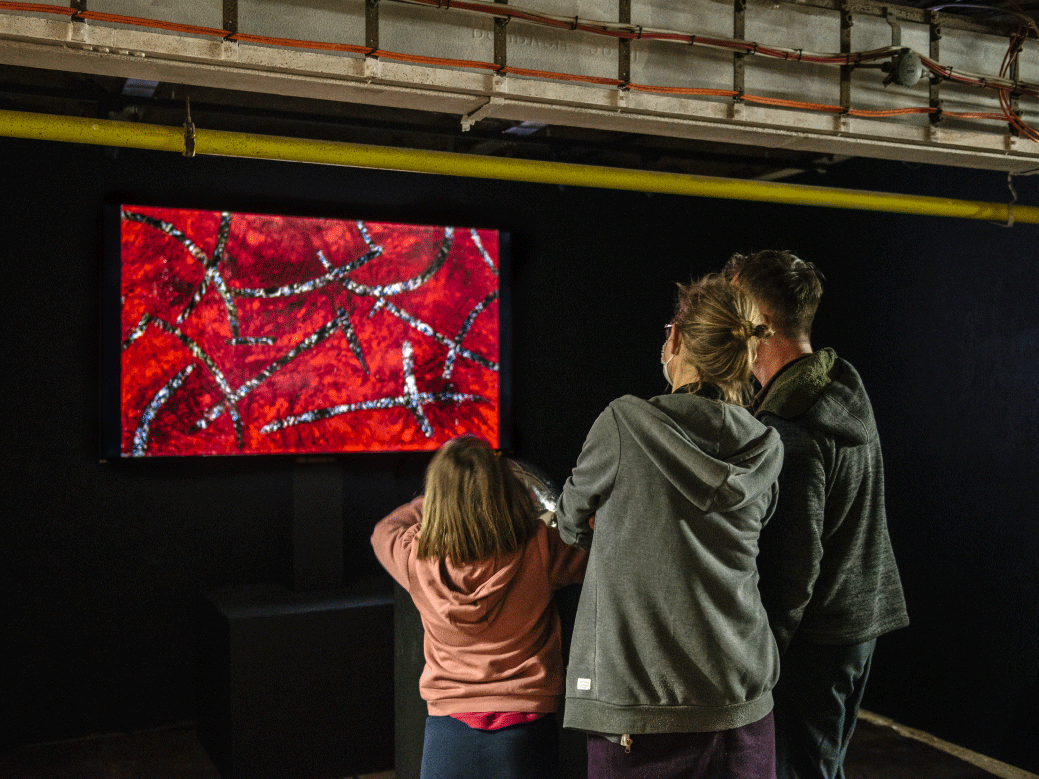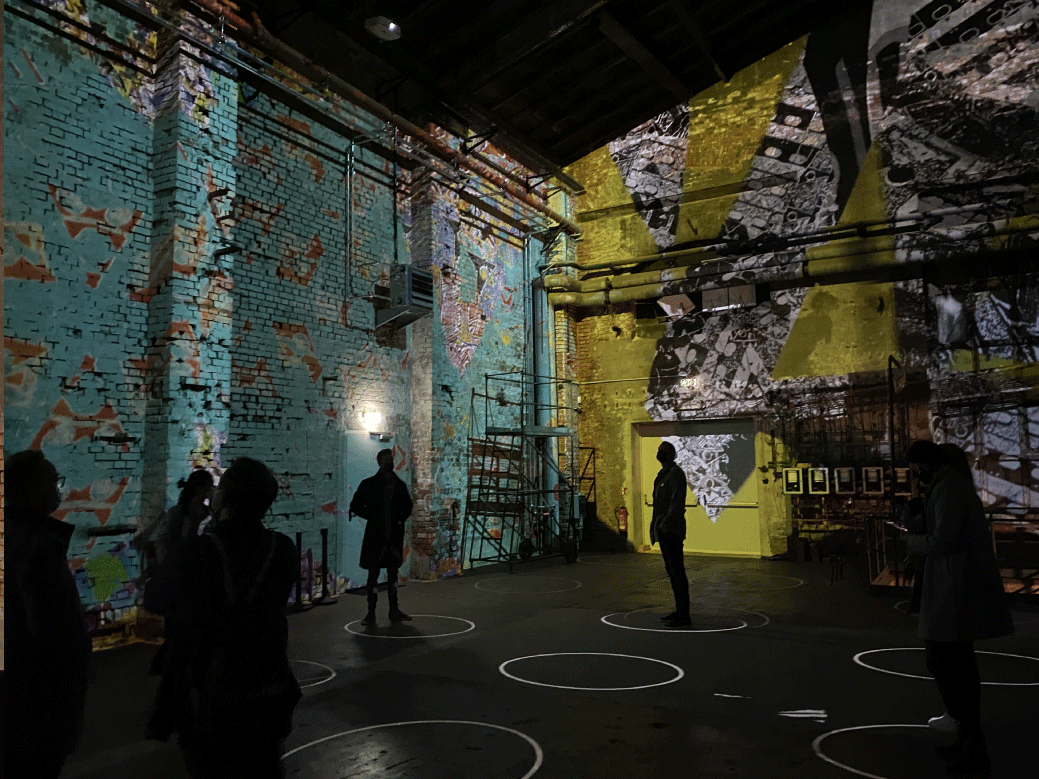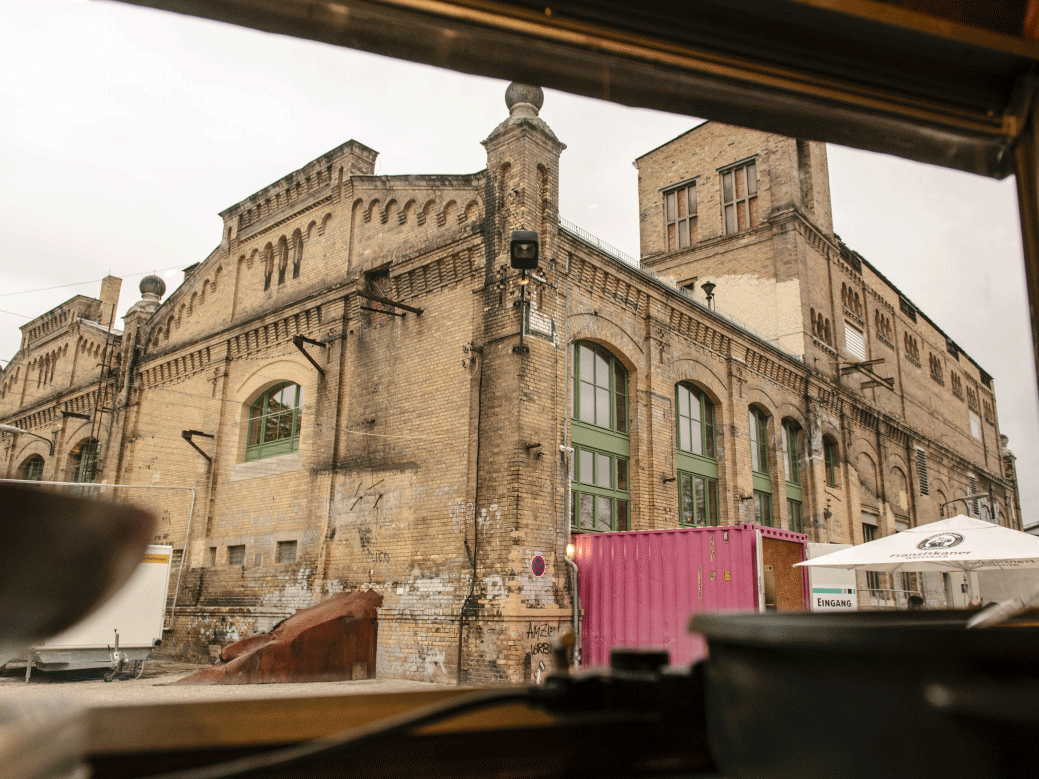Against all the pandemic odds, Bright Festival Connect took place on October 23rd, 24th and 25th in Leipzig.
The fascinating Kunstkraftwerk – an old power plant transformed into the first German museum entirely dedicated to multimedia arts – hosted three exciting days of events with immersive art pieces, interactive installations, mix-media sculptures, live performances and light art shows.
Artists, experts and design studios from all over Europe didn’t waste the creative opportunities offered by the industrial surroundings, encouraging visitors to interact with new technologies and discover cutting-edge and futuristic artistic expressions.
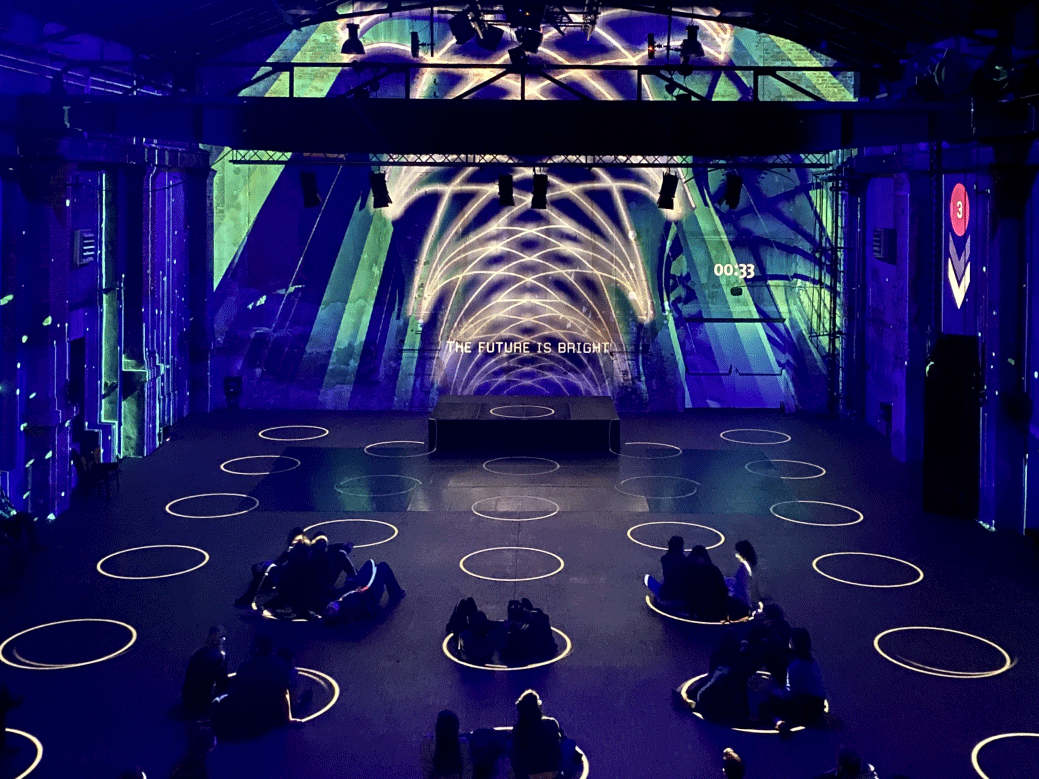
The Farnesina Immersive Art Experience delivered a dramatic multimedia experience to the audience, proving once more the possibilities of audience engagement offered by the audiovisual arts installations.
A true sensorial bath featuring a 360° immersive audiovisual projection breaking all boundaries between artwork and user. It also restresses how we can rethink our way of experiencing arts, while also respecting the COVID related health regulations. Experiencing immersive arts can be done in total safety when planning has been done thoroughly and followed to the letter.
Despite being a difficult moment with the ongoing public health emergency, the event welcomed over 1800 visitors in three days (limited tickets because of COVID-19 pandemia rules). Thanks to a very detailed safety plan, the participants were able to enjoy the shows respecting all the safety and social distancing regulations.
THE SAFETY PROTOCOLS AND EXECUTION
Together with Professor Mr. Markus Loeffler, we designed a new model of fruition and ticketing based on three focus points:
1. PROJECTED LIGHT CIRCLES POSITIONING
In the halls used for immersive light shows the social distancing was insinuated by projections of white circles on the floor 1,5 m in diameter and 1,5 m apart from each other. One or two persons sat down in each circle.
2. MARKED PARCOUR
The visitors were guided on a marked parcour which could be followed by an icon sign sequence or be a flyer with a map.
3. TIME SLOT BASED TICKETING
Groups of 60 persons were permitted to go on a parcours every hour so queues on the parcours could be avoided. This was ensured by an hourly online ticketing with contactless scan. 90% percent of the hourly slots were sold out.
SOME CONCLUSIONS:
What have we learned? What conclusions can we draw?
An appropriate safety plan allows the realization of cultural events. Compliance with hygiene concepts is feasible.
But other limitations play a much more critical role: the limited number of visitors and at the same time the increase of the staff costs has an undesirable impact on the revenues.
The realization of cultural events during the CORONA pandemic is feasible but requires financial support from institutions and sponsors.
We would like to thank all the partners who have supported us in this unique experience:
Italian Ministry of Foreign Affairs, Italian Cultural Institute of Berlin, Denkzeit, City of Leipzig, Canon, Ticketswap, HTWK, Oubey Mindkiss.
Bright Festival_Connect is an international cooperation project fostering digital creativity as a means of connection between different countries and cultures. The project was born as a collaboration between Italy, Germany and Russia and is open to all the institutions and partners committed to promoting the digital creative industry.

